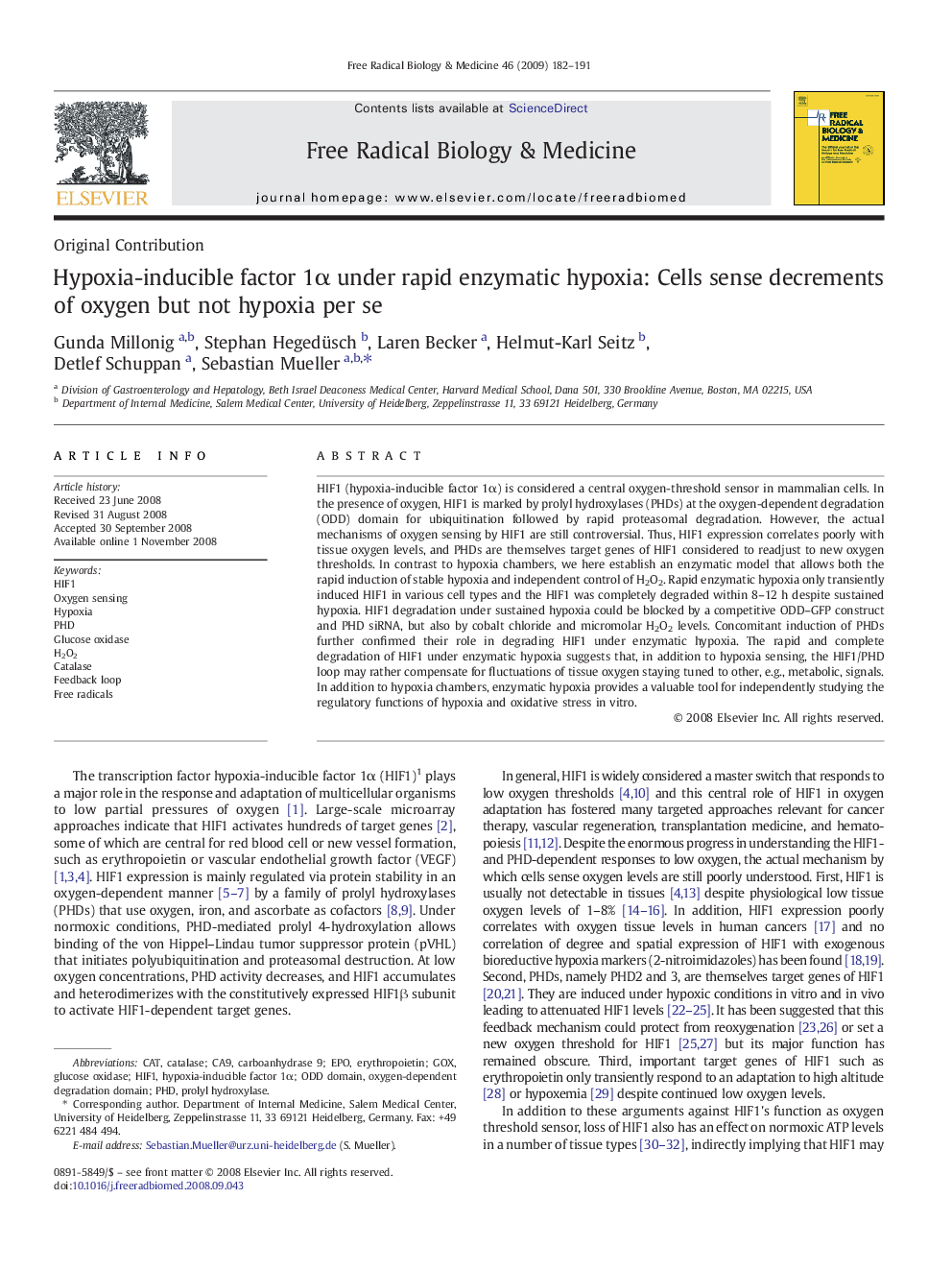| Article ID | Journal | Published Year | Pages | File Type |
|---|---|---|---|---|
| 1910463 | Free Radical Biology and Medicine | 2009 | 10 Pages |
HIF1 (hypoxia-inducible factor 1α) is considered a central oxygen-threshold sensor in mammalian cells. In the presence of oxygen, HIF1 is marked by prolyl hydroxylases (PHDs) at the oxygen-dependent degradation (ODD) domain for ubiquitination followed by rapid proteasomal degradation. However, the actual mechanisms of oxygen sensing by HIF1 are still controversial. Thus, HIF1 expression correlates poorly with tissue oxygen levels, and PHDs are themselves target genes of HIF1 considered to readjust to new oxygen thresholds. In contrast to hypoxia chambers, we here establish an enzymatic model that allows both the rapid induction of stable hypoxia and independent control of H2O2. Rapid enzymatic hypoxia only transiently induced HIF1 in various cell types and the HIF1 was completely degraded within 8–12 h despite sustained hypoxia. HIF1 degradation under sustained hypoxia could be blocked by a competitive ODD–GFP construct and PHD siRNA, but also by cobalt chloride and micromolar H2O2 levels. Concomitant induction of PHDs further confirmed their role in degrading HIF1 under enzymatic hypoxia. The rapid and complete degradation of HIF1 under enzymatic hypoxia suggests that, in addition to hypoxia sensing, the HIF1/PHD loop may rather compensate for fluctuations of tissue oxygen staying tuned to other, e.g., metabolic, signals. In addition to hypoxia chambers, enzymatic hypoxia provides a valuable tool for independently studying the regulatory functions of hypoxia and oxidative stress in vitro.
